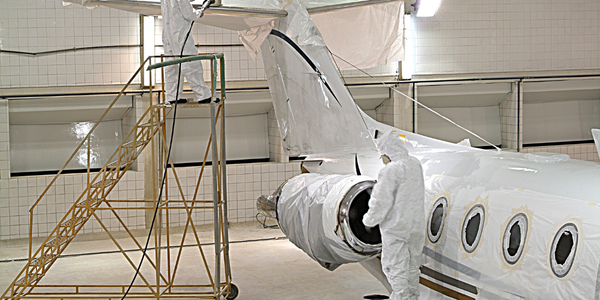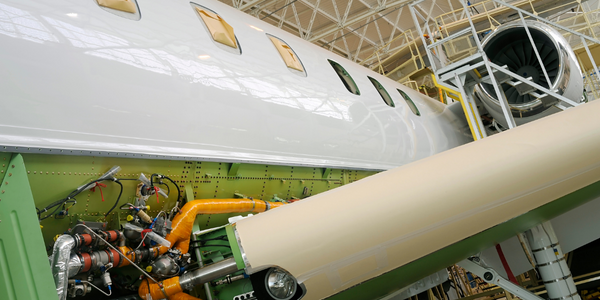Customer Company Size
Large Corporate
Region
- America
- Europe
- Asia
Country
- United States
- Finland
- China
Product
- Nutanix Acropolis
- Nutanix Prism
- Nutanix NX-6000 series
Tech Stack
- Hyperconverged Infrastructure
- VMware
- Oracle
Implementation Scale
- Enterprise-wide Deployment
Impact Metrics
- Cost Savings
- Customer Satisfaction
- Productivity Improvements
Technology Category
- Infrastructure as a Service (IaaS) - Cloud Computing
- Platform as a Service (PaaS) - Connectivity Platforms
Applicable Industries
- Aerospace
Applicable Functions
- Business Operation
- Facility Management
Services
- System Integration
- Software Design & Engineering Services
About The Customer
GA Telesis is a global leader in the commercial aviation sector, with over $1.0 billion in assets under management. Founded in 2002 in Fort Lauderdale, Florida, the company operates sales, leasing, distribution, and maintenance facilities across the United States, Canada, United Kingdom, Finland, and China. GA Telesis serves almost every major airline, providing a wide range of services and solutions to the commercial aviation industry. The company has grown rapidly through strategic acquisitions, which have increased its IT demands and complexities. GA Telesis is committed to creating value for its customers by developing strategic solutions for the aviation sector.
The Challenge
GA Telesis faced significant challenges as it expanded through strategic acquisitions, which increased IT demands and complexities. The company needed to integrate a variety of legacy systems into its existing infrastructure, which was due for an upgrade. The existing EMC storage appliances were reaching the end of their life, and maintenance costs were escalating. System management was also a challenge, as managing storage had become a full-time job, diverting resources from the company's core processes. GA Telesis needed a solution that would simplify management, reduce the data center footprint, and lower Oracle licensing costs.
The Solution
GA Telesis chose Nutanix's hyperconverged Enterprise Cloud Platform to address its IT challenges. The company purchased its first Nutanix NX-6000 series 4-node cluster in December 2016 and installed it at its primary data center for all production workloads. Nutanix's proactive approach ensured seamless installation and deployment, with no surprises along the way. The Nutanix platform's ease of management, dashboards, and non-disruptive software updates were key factors in the decision. Nutanix's Data Locality capability enhanced performance and eliminated the 'noisy neighbor' problem common in traditional storage environments. The solution delivered significant cost savings and simplified management, allowing GA Telesis to focus on its core business.
Operational Impact
Quantitative Benefit

Case Study missing?
Start adding your own!
Register with your work email and create a new case study profile for your business.
Related Case Studies.

Case Study
Airbus Soars with Wearable Technology
Building an Airbus aircraft involves complex manufacturing processes consisting of thousands of moving parts. Speed and accuracy are critical to business and competitive advantage. Improvements in both would have high impact on Airbus’ bottom line. Airbus wanted to help operators reduce the complexity of assembling cabin seats and decrease the time required to complete this task.

Case Study
Aircraft Predictive Maintenance and Workflow Optimization
First, aircraft manufacturer have trouble monitoring the health of aircraft systems with health prognostics and deliver predictive maintenance insights. Second, aircraft manufacturer wants a solution that can provide an in-context advisory and align job assignments to match technician experience and expertise.

Case Study
Aerospace & Defense Case Study Airbus
For the development of its new wide-body aircraft, Airbus needed to ensure quality and consistency across all internal and external stakeholders. Airbus had many challenges including a very aggressive development schedule and the need to ramp up production quickly to satisfy their delivery commitments. The lack of communication extended design time and introduced errors that drove up costs.

Case Study
Accelerate Production for Spirit AeroSystems
The manufacture and assembly of massive fuselage assemblies and other large structures generates a river of data. In fact, the bill of materials for a single fuselage alone can be millions of rows of data. In-house production processes and testing, as well as other manufacturers and customers created data flows that overwhelmed previous processes and information systems. Spirit’s customer base had grown substantially since their 2005 divestiture from Boeing, resulting in a $41 billion backlog of orders to fill. To address this backlog, meet increased customer demands and minimize additional capital investment, the company needed a way to improve throughput in the existing operational footprint. Spirit had a requirement from customers to increase fuselage production by 30%. To accomplish this goal, Spirit needed real-time information on its value chain and workflow. However, the two terabytes of data being pulled from their SAP ECC was unmanageable and overloaded their business warehouse. It had become time-consuming and difficult to pull aggregate data, disaggregate it for the needed information and then reassemble to create a report. During the 6-8 hours it took to build a report, another work shift (they run three per day) would have already taken place, thus the report content was out-of-date before it was ever delivered. As a result, supervisors often had to rely on manual efforts to provide charts, reports and analysis.

Case Study
Developing Smart Tools for the Airbus Factory
Manufacturing and assembly of aircraft, which involves tens of thousands of steps that must be followed by the operators, and a single mistake in the process could cost hundreds of thousands of dollars to fix, makes the room for error very small.








